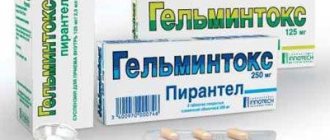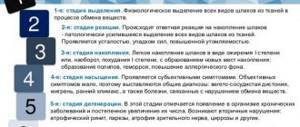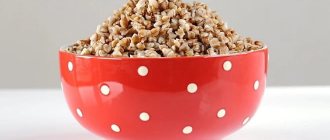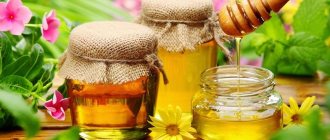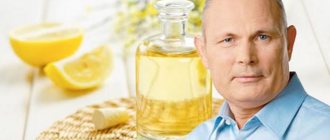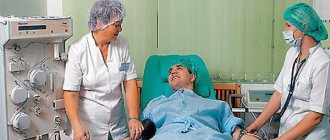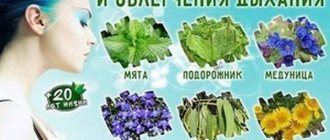Man is part of the surrounding world; he is inextricably linked with nature and society. All the world's problems and crises affect everyone in one way or another. And the first organ that suffers from this is the heart. Official statistics provide terrifying figures: a third of all deaths on the planet occur from cardiovascular diseases. Ayurveda is a real help for a tired heart and clogged blood vessels. Clinics in India offer time-tested complexes of Ayurvedic measures aimed at improving the health of the whole body.
When to cleanse
Cleansing the body according to Ayurveda must be carried out taking into account the biorhythms of the human body and the entire cosmos as a whole. The most suitable period for cleansing manipulations is considered to be the time when the sun passes through three constellations that belong to the element of fire. These include Aries, Leo and Sagittarius. During this period, energy is distributed in the air, so the body needs easily digestible food.
You can also find echoes of ancient traditions in Orthodoxy. It is not for nothing that all strict fasts occur during fire signs. Cleansing procedures will bring great benefits to the body if they are carried out at a time when the seasons of the year change. This is considered the most optimal time for gentle cleansing of the body.
When the body is heavily polluted, serious cleansing procedures are carried out. Panchakarma procedures are carried out in special treatment centers. These include heating, oil rubbing, medicinal enemas, baths, medicinal inhalations and bloodletting. The frequency of cleansing procedures directly depends on a person’s physique and metabolic rate. For a thin and fit person, it is enough to cleanse the body once a year; for overweight and obese people, the cleansing procedure is necessary once a quarter.
All cleansing procedures must begin on the first day of the waning moon.
It must be remembered that from January to mid-summer, the sun's activity is too high, which greatly depletes the human body.
In the first half of the year, some loss of strength is understandable, so it is advisable to avoid excessive physical and mental stress. The highest solar activity is observed in May. During this period, according to Ayurveda, the body is acidified. Acidification is observed in August due to the abundance of acidic plant products in the diet. It is believed that an acidic environment is the most favorable soil for the onset of all diseases. To eliminate excess acid in late spring and summer, you need to drink warm milk with added butter every day. For half a glass of milk, take from a teaspoon to a tablespoon of butter, the amount of fat depends on your body type. If you have an intolerance to dairy products, you can take an incomplete tablespoon of flax seed, grind it in a coffee grinder and pour a glass of boiling water. After this, the composition should be left for 20 minutes, whipped into foam and drunk in small sips.
During the off-season, a person should consume a lot of natural sorbents. These can be young nettle shoots, gooseberry fruits and an infusion of barley grains.
Kingdom of Vata dosha
Ayurveda calls the large intestine the realm of vata dosha. The inner surface of the colon is very rich in receptors. The impact on them of the “ballast” from our lunch activates those centers of the spinal cord that are responsible for the activity of many vegetative organs. Due to chronic stress and a sedentary lifestyle, unhealthy diet, abuse of pureed food and preservatives, samana-vata (in Ayurveda this term refers to the part of the nervous system that regulates the production of digestive enzymes, peristalsis and the opening of the sphincters of the gastrointestinal tract), pachaka-pitta is disrupted (digestive enzymes) and kledaka-kapha (protective functions of the mucous membrane of the stomach, small and large intestines).
In a word, eating fast food and the whole rhythm of life of a modern person leads to the accumulation of ama in the intestines, i.e. - slags. Ama is sticky, viscous, heavy mud. It covers the brush border and lacunae of the small intestine. And thereby interferes with normal digestion and absorption of amino and fatty acids, glucose, trace elements and vitamins. Ama also disrupts the access of biologically active substances to the apudial cells. This sticky mud blocks the receptors of the large intestine and causes constant internal toxicity. Because of this, a person feels constant weakness, fatigue, general malaise and irritability.
This is how “slag” products accumulate, poisoning the body. As a result, we are forced to eat much more food than we need. Not only Ayurveda, but also modern medicine knows: the hunger center in the brain is blocked only when the blood is sufficiently saturated with glucose. Overeating leads to indigestion and even greater accumulation of ama. Dysbacteriosis may also develop. As a result, medications and dietary supplements do not have the desired effect, since their absorption process is disrupted. The disease moves into the next stage. Ama is absorbed into the blood and begins to poison the tissues and organs of the body.
The power of minerals and metals
To cleanse the body at home, you need to regularly drink honey water during the changing seasons. This drink activates and improves digestion.
An incomplete teaspoon of honey is diluted in a glass of purified water and left overnight. The drink should be slightly sweet. Immediately after waking up, you need to drink such a honey drink, and you need to do this without getting out of bed. This drink has an irritating effect, it helps open the bile ducts and prevents bile stagnation.
All people are divided into three groups according to their body type:
- Cotton wool.
- Pitta.
- Kapha.
Depending on your body type, certain minerals are added to honey water. People with Vata type are thin, fussy and very impulsive, silver is suitable for them. The pitta type is characterized by an average build, ambition and determination; gold, jade and platinum are suitable for them. Kapha type people tend to be overweight, but at the same time graceful and slow; gold, carnelian and ruby are suitable for them.
Mixed body types are often found, in which case the recommendations are different. Here you need to select a diet for the two dominant groups. In addition, weather conditions must be taken into account.
On our website you will also find information about cleansing the intestines with salt water.
Nasya - taking medicine through the nose
Getting rid of toxins and taking medications through the nose - Nasya, should be performed only after preparation with a warming massage using oils. It is enough to massage the face, neck and décolleté to achieve the required tonic effect.
Among the effective methods used:
- inhalation;
- washing the nose with medicinal plants;
- smoking aromatic substances.
Ayurvedic oils are selected taking into account the body constitution. For cotton wool, calamus and vetiver are used. Mint, rose, coriander and lavender are more suitable for pita, while basil, orange and rosemary are used for kapha.
To prepare a healing solution, add 2 to 6 drops of essential oil to a tablespoon of base. The mixture is heated to a temperature of 38 degrees and, while inhaling, dripped into one of the nasal cavities. After three breaths, light massage manipulations are performed in the nose area. The procedure is repeated for the second nasal cavity.
Indications for use of Nasya
Ayurveda cleansing of mucus in the nasal cavity helps cope with headaches and helps get rid of memory loss. By cleansing the nose, you can overcome dryness in the sinuses, as well as get rid of seasonal manifestations of allergic reactions. This is a good method that allows you to cope with inflammation in the upper respiratory tract. It is excellent for cramps and eye diseases. Allows you to partially solve problems with distracted attention.
Contraindications
Ayurvedic procedures for cleansing the nasal cavity have their own contraindications, so not everyone can benefit from their beneficial effects.
Cleansing according to Ayurveda using this method should not be performed after visiting the bathhouse. It is contraindicated for women during menstruation and pregnancy. If it is able to weaken inflammatory processes at the initial stage of their development. However, for the acute form, this type of cleansing is contraindicated. It is unacceptable to use this cleaning method after eating or while intoxicated.
In harmony with the soul
In the body of every person, all three doshas - vata, pitta and kapha - are harmoniously combined. They are fully responsible for the functioning of all internal organs. If there is disharmony in at least one of the doshas, the human body becomes vulnerable to the influence of various factors. Disharmony in the body can be caused by:
- feelings and thoughts;
- habits;
- diet;
- Lifestyle.
Vata is found throughout the bones, bladder, intestines, ears, feet and kidneys. If the balance of this dosha is disturbed, this is manifested by indigestion, as well as cramps and severe flatulence. In this case, Ayurveda suggests cleansing the intestines. Pitta is located in the lymph nodes and duodenum, and a symptom of imbalance is high acidity. Cleansing occurs through a mild laxative. Kapha is located in the head, neck, joints and chest. The imbalance is manifested by various pathologies of the respiratory tract, in which the accumulation of viscous mucus occurs. You can clear kapha by vomiting.
To completely cleanse the dosha, you should get the advice of a specialist who understands Ayurveda well.
Features of the intestines
The length of the intestine is up to 15 meters with large winding folds. With healthy and daily bowel movements, impurities form in the bends of the large intestine, which harden over time and, against the background of bacterial action, begin to rot, ferment, form miasma and many other toxic components. Toxic substances penetrate through the intestinal walls into the blood, which provokes disturbances in the functioning of the gastrointestinal system, metabolic and hormonal processes. The slagging of the body manifests itself in the following signs:
- constipation;
- increase in abdominal volume;
- darkening of the skin;
- bad breath;
- visual increase in age spots;
- acne;
- excessive gas formation and pain in the abdominal area.
Panchakarma
Panchakarma is an annual cleansing of the entire body that helps cleanse and rejuvenate energy channels. This technique has been used since ancient times to prepare the body for the changes that occur during the changing seasons.
The procedures carried out help clear clogged channels and help restore a special connection with other people and nature as a whole. The purpose of this cleansing is to remove toxic substances and waste from the body that interfere with normal functioning. Harmful substances are also removed from the body at the cellular level, which helps restore the balance of the entire body.
Panchakarma traditionally consists of five therapeutic procedures, which include:
- Cleansing enemas with decoctions of certain medicinal herbs and natural oils.
- Cleansing the body through emetics.
- A course of treatment with laxatives.
- Cleaning the nasal passages. Inhaled medications are administered through the nasal canals.
- Bleeding. This manipulation can be carried out either using leeches or a syringe.
Procedures are prescribed to people selectively, depending on their body type and health status. All procedures at once are recommended extremely rarely, and only if the slagging in the body is too pronounced.
Cleansing the body is carried out only after special preparatory procedures that help separate toxic substances from cells:
- Oil therapy. A person takes internally and uses externally natural oils that are mixed with extracts of medicinal herbs.
- Steam therapy. Includes a visit to the bathhouse where medicinal plants are used.
Cleansing the body according to Ayurveda is a long and gradual process that requires several cycles. Here preference is given not to accelerated, but to gradual recovery.
For the immune system, it is always better to get rid of addictions slowly than to get rid of them instantly. First, bad habits are changed to less harmful ones, and then they get rid of them altogether.
Causes of heart disease according to Ayurveda
Ayurveda considers the causes of heart disease to be a person’s lifestyle and heredity. Factors affecting the cardiovascular system:
- genetic predisposition;
- emotional trauma;
- a sharp reaction to stress, overexertion and chronic fatigue;
- errors in nutrition and lifestyle.
In addition to these reasons, the heart is affected by diseases of other organs: the consequences of rheumatism, problems with the liver and digestion. The most common include angina, stroke, atherosclerosis, and hypertension. Ayurveda can cleanse blood vessels and strengthen the heart muscle with the help of herbal preparations.
What to pay attention to
To prevent the body from quickly slagging again after cleansing, you should follow certain recommendations of Ayurvedic specialists.
- You need to eat food with positive emotions. This process should be enjoyable.
- You need to listen to your body. He himself will tell a person what he needs and what he doesn’t.
- You should not eat products that contain flavor enhancers, especially you should not give such products to children. Thanks to the additive, even tasteless foods become tasty.
- You can't eat when you're in a bad mood. It is unacceptable to eat stress and depression.
After cleansing procedures, a course of therapeutic massage with essential oils is indicated.
After cleansing the body, you should not immediately pounce on food. Products are introduced into the diet gradually and without fanaticism. At this time, herbal teas and decoctions will be useful. After cleansing the body, you need to stick to a diet that suits your body type.
How Ayurvedic doctors diagnose heart disease
Treatment results depend on timely consultation with a doctor. What you should be concerned about:
- burning sensation in the heart area;
- bouts of sweating;
- frequent causeless dizziness;
- regular nosebleeds;
- shortness of breath and dry cough without a cold;
- numbness and severe pain in the chest;
- insomnia.
Any of these problems are enough to sound the alarm. In addition, cleaning and strengthening blood vessels according to Ayurveda will not hurt a healthy person. But “prescribing” a diagnosis, much less treating yourself on your own, is very dangerous. And it’s not even a matter of choosing medications. It is much worse to waste time and see a doctor too late.
Ayurvedic doctors make a diagnosis by feeling the patient's pulse. Ancient texts describe approximately 150 types of pulses, varying in speed and force of impact, frequency, rhythm, and filling. Without additional research, specialists are able to assess the condition of the heart and blood vessels, determine which dosha predominates and which requires support, and which energy channels need to be cleaned.
Atreya Ayurvedic Center
5.00 / 5
Kerala
Panchakarma: Classical, Kuti Praveshika Rasayana
Treatment: arthritis, allergies, asthma, insomnia, joint diseases, diabetes, gastrointestinal tract, immune system diseases, obesity, chronic fatigue syndrome see all
Yoga classes: every day
$3,225 / 28 days
$2,420 / 21 days
$1,620 / 14 days
$810 / 7 days
From: $116
book

